
views
Removing the Excess
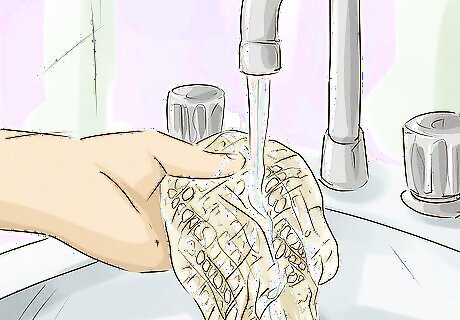
Rinse the tripe. Run the tripe through cold water to remove any loose waste products attached to it.
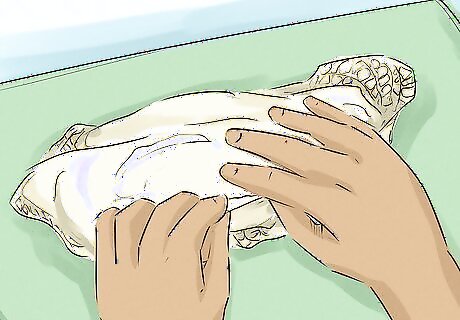
Remove the fat. To find excess fat, you'll need to inspect the non-textured side of the tripe. If you see any fat, pull it up and slice it off with the knife. Fat will look noticeably different to the tripe, being more pale and feeling more like rubber. Tripe is a low fat meat so you shouldn't have too much fat to remove. Other unnecessary parts such as remnants of food from the animal's stomach will be removed by other processes during the cleaning. Do not cut the tripe into strips or sections yet.
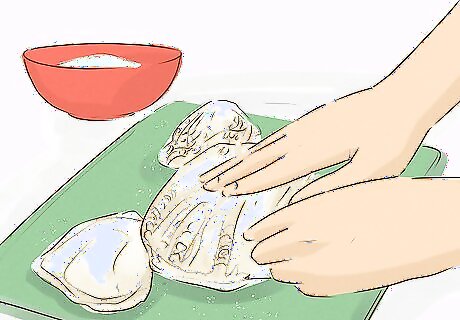
Rub the tripe with rock salt and rinse it with vinegar. This process will loosen any unwanted waste products and make the surface smooth without damaging the tripe itself. Vinegar is acidic and is therefore useful at getting deep into the layers of the tripe and effectively cleaning it. Next, use the rock salt again and rub it across the tripe the same way you just did. The goal here is to clean the tripe as effectively as possible. Keep repeating the process until the tripe looks and feels like it's both smooth and clean.
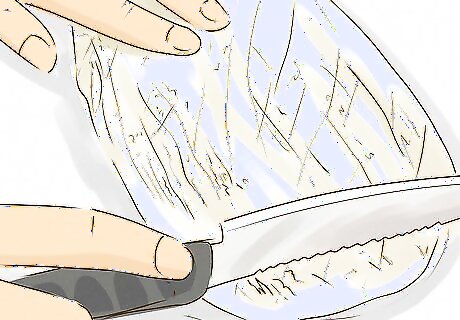
Scrape the surface. Using the spine of a sharp knife, scrape the surface of the tripe to remove any imperfections. Honeycomb tripe can be hard to sufficiently clean with a knife due to its relative lack of flatness. For this you can use a toothbrush instead.
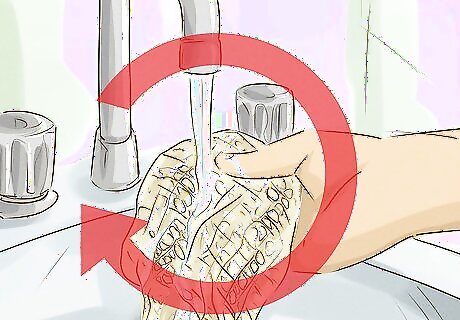
Rinse the tripe again. Gently rinse the tripe under cold water again for a few minutes to remove any remaining grit from the meat. While bleached tripe will already be free from grit, it's a good idea for you to rinse it to get rid of the smell. The chlorine on bleached tripe can also get into the other foods you are cooking, which could make the whole meal smell like bleach.
Boiling the Tripe
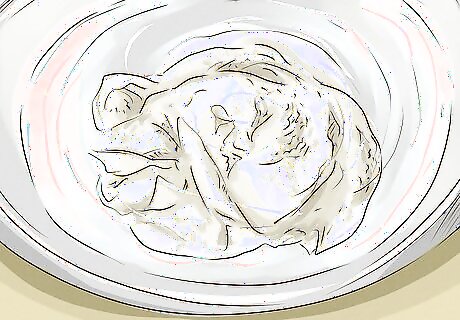
Steep the tripe in a bowl of water for 1 hour. Make sure that the tripe is completely covered by the water. This ensures that all of the tripe is being sufficiently soaked.
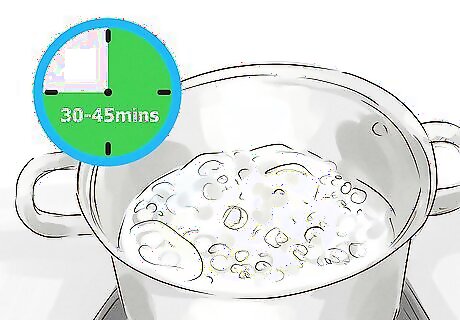
Place the tripe in a large pot. Pour some cold water into the pot and bring it to the boil. Allow the tripe to boil for between 30 and 45 minutes. Add a tablespoon of salt for every liter of water in the pot. Boiling the tripe is important as it removes any dangerous bacteria from the tripe. It also makes the tripe easier to cut and slice later, as well as reducing the cooking time when preparing the meal.
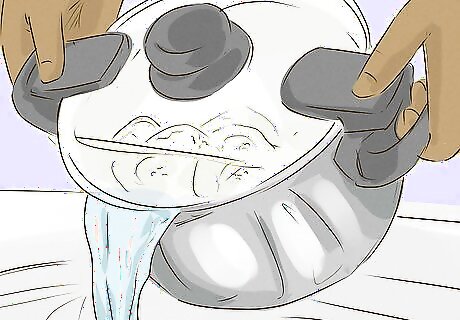
Drain the pot and rinse the tripe again. Use cold water to wash the tripe. Rigorously and repeatedly rinsing the tripe is very important to ensuring the tripe is as clean as it can be.
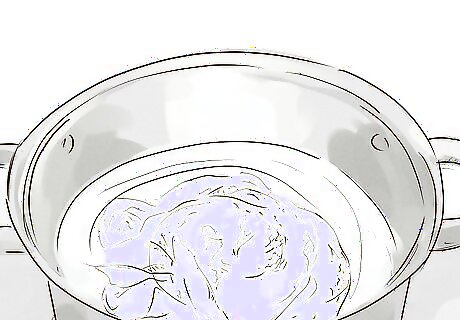
Refill the pot and allow it to simmer. Then place the tripe back in the pot. Allow the tripe to simmer in the pot for 2 to 3 hours. The water will slowly evaporate so remember to occasionally add water into the pot to keep the tripe covered.
Cutting the Tripe
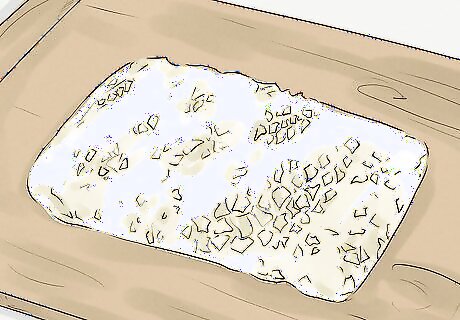
Place the tripe on the cutting board. Lay the smoother side down and as flat as possible. The tripe is now at its easiest to cut after the boiling and simmering.
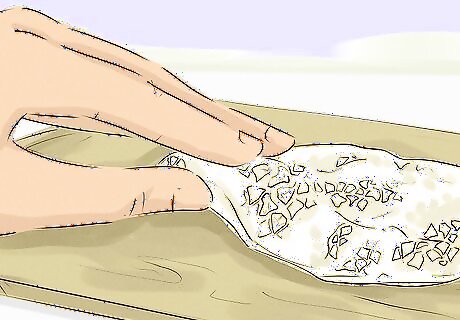
Inspect the tripe for unnecessary parts. Now that the tripe has been thoroughly cleaned, have a look at it once more to see if there is any fat or grit that needs to be sliced off. Chop off anything you see that shouldn't be there.
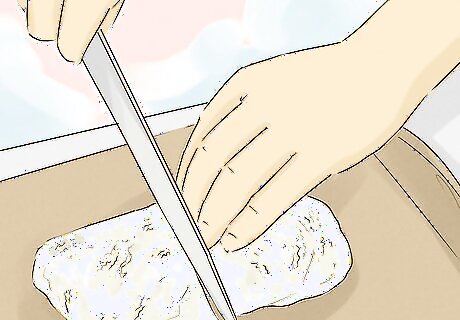
Cut the tripe in half. Using a sharp knife, slice the tripe in half from top to bottom, splitting it into two separate pieces. It is easiest to cut the tripe at this stage of the process as the boiling has hardened it. If you try to cut the tripe before this stage, it will be far too tender and it will be very difficult to accurately and cleanly cut it.
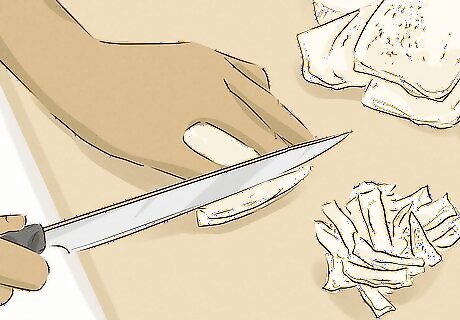
Cube the tripe. Take one of the tripe pieces you have and slice it into long, thin strips. Then take a single strip and cut it into 2 inch by 2 inch cubes. Repeat the process for the rest of the tripe. Now your tripe is ready to be used in whichever way you desire. Tripe can be used in a variety of ways, from grilling to making tripe soup. It can also be used in a whole host of different dishes, including Asian and Mexican meals among others.


















Comments
0 comment